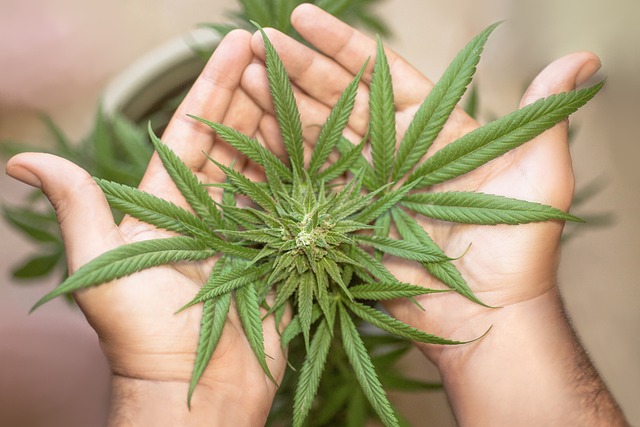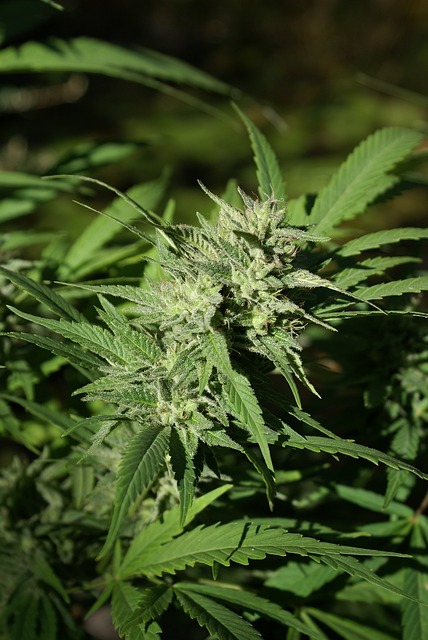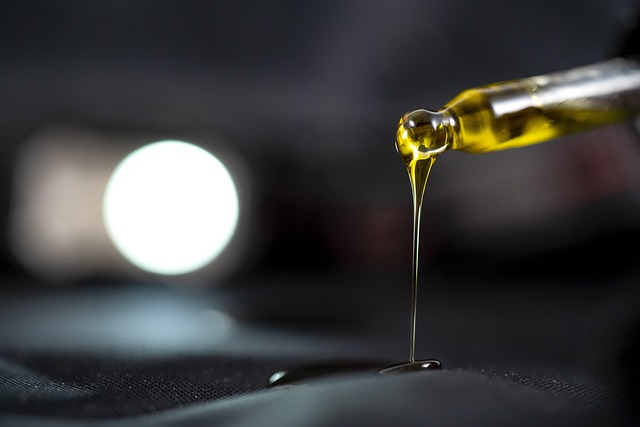
Δ9-tetrahydrocannabinolic acid (THCA) found in raw cannabis plants is gaining attention for its therapeutic potential in managing various types of pain without inducing psychoactive effects. Clinical studies and user experiences highlight the efficacy of THCA flower as a natural analgesic, suggesting it can help with inflammation and neuropathic pain by interacting with the endocannabinoid system to modulate pain signals. By inhibiting fatty acid amide hydrolase (FAAH), THCA may enhance anandamide levels, known for their mood-lifting and pain-relieving effects. The non-psychoactive THCA flower is being recognized as a safe alternative to traditional cannabis products that can offer pain relief without the cognitive impairments they sometimes cause. This makes it a promising option for those looking for plant-based solutions to manage discomfort effectively, with emerging research supporting its use. Users should be aware of potential mild side effects like drowsiness and dry mouth, and it's important to start with a low dose to understand individual responses. Consulting a healthcare provider is crucial to ensure that THCA flower aligns with one's overall health plan and to verify the product's safety and efficacy. Proper dosage and attentive monitoring can help maximize the benefits of THCA flower for pain relief while minimizing any adverse effects.
Exploring the multifaceted relationship between THCA flower and its potential for pain relief, this article delves into the scientific underpinnings of this compound’s analgesic properties. As we navigate the therapeutic landscape, it’s crucial to understand both the promising benefits and the possible side effects associated with its use. Through a meticulous examination, we aim to provide clarity on how THCA flower can be utilized for pain management, offering insights into its efficacy and safety considerations. Join us as we dissect the latest research on THCA flower for pain relief and shed light on the full spectrum of its effects.
- Unraveling the Effects of THCA Flower on Pain Relief: A Comprehensive Analysis
- The Science Behind THCA Flower and Its Analgesic Properties
- Potential Side Effects and Considerations When Using THCA Flower for Pain Management
Unraveling the Effects of THCA Flower on Pain Relief: A Comprehensive Analysis

Delta-9-tetrahydrocannabinolic acid (THCA) is the non-psychoactive precursor to the well-known psychoactive cannabinoid, delta-9-tetrahydrocannabinol (THC). Found abundantly in raw cannabis plants, THCA flower has garnered attention for its potential therapeutic properties, particularly in pain management. Emerging research suggests that THCA interacts with the body’s endocannabinoid system, influencing pain perception without the psychoactive effects associated with THC. This interaction may provide effective pain relief for conditions ranging from mild discomfort to chronic pain syndromes. Clinical studies and anecdotal evidence support the use of THCA flower for pain relief, indicating its efficacy in reducing inflammation and modulating neuropathic pain. The anti-inflammatory and analgesic effects of THCA are believed to stem from its ability to inhibit fatty acid amide hydrolase (FAAH), the enzyme that breaks down anandamide, a cannabinoid produced naturally in the body also known as the ‘bliss molecule’. This inhibition may lead to increased levels of anandamide, enhancing its pain-relieving and mood-elevating effects. Users report a range of benefits from incorporating THCA flower into their wellness routines, highlighting its role as a natural alternative for pain relief without the mind-altering side effects often associated with THC-rich products. As research continues to evolve, the potential applications and benefits of THCA flower for pain relief are becoming increasingly clear, offering hope and relief to those seeking effective, plant-based solutions for managing pain.
The Science Behind THCA Flower and Its Analgesic Properties

Delta-9-tetrahydrocannabinol acid (THCA) is the non-psychoactive precursor to the well-known compound delta-9-tetrahydrocannabinol (THC), found abundantly in the cannabis plant. THCA flower, which contains high levels of THCA, has garnered attention for its potential therapeutic benefits, particularly for pain relief. Recent scientific studies have elucidated the mechanisms by which THCA interacts with the human endocannabinoid system, a complex network that regulates various physiological processes, including pain sensation and inflammation response. THCA’s analgesic properties are thought to stem from its ability to bind to both CB1 and CB2 receptors, which play a role in modulating pain signals within the nervous system. This binding action may inhibit neurotransmitter release, leading to a reduction in pain perception without the psychoactive effects associated with THC. Moreover, THCA’s anti-inflammatory properties are believed to contribute to its analgesic effects by reducing the production of pro-inflammatory cytokines and enzymes that mediate inflammation and pain. As a result, THCA flower has emerged as a promising natural alternative for individuals seeking relief from various types of pain, ranging from mild to chronic discomfort, without the mind-altering effects typically associated with cannabis consumption.
Potential Side Effects and Considerations When Using THCA Flower for Pain Management

THCFA (Tetrahydrocannabinolic Acid) flower has gained attention in the realm of natural pain management due to its potential therapeutic benefits. While it is non-psychoactive, meaning it does not induce a high like its decarboxylated form THC (Tetrahydrocannabinol), users should be aware of possible side effects when using THCA flower for pain relief. Common reports include drowsiness and dry mouth, which are typically mild and temporary. Additionally, some individuals may experience gastrointestinal distress or anxiety, although these occurrences are less common. It is crucial to start with a low dose to gauge individual sensitivity and to avoid unexpected reactions.
When incorporating THCA flower into a pain management regimen, several considerations must be taken into account. Firstly, THCA interacts with the body’s endocannabinoid system, which plays a role in regulating pain and inflammation. Users should consult with a healthcare provider to ensure that THCA is an appropriate addition to their treatment plan, especially if they are taking other medications. Furthermore, as with any substance, individual experiences can vary widely, and what works for one person may not be effective or suitable for another. It is also important to note the legality and purity of the product, as well as the source from which it is obtained, to ensure safety and efficacy. Adhering to recommended dosages and being aware of individual responses can help mitigate any adverse effects and maximize the potential benefits of THCA flower for pain relief.
In conclusion, the exploration of THCA flower as a potential therapeutic option for pain relief presents a promising avenue with its unique analgesic properties. The scientific analysis underscores the potential benefits of THCA flower, which may offer effective pain mitigation without the psychoactive effects typically associated with cannabis products containing higher concentrations of THC. However, it is imperative to approach its use with caution and awareness of the possible side effects, such as drowsiness, dry mouth, and anxiety. A nuanced understanding of individual physiology, dosage sensitivity, and interaction with other medications is critical when incorporating THCA flower into a pain management regimen. As research continues to evolve, the integration of THCA flower for pain relief may become a more prominent aspect of holistic health strategies.







